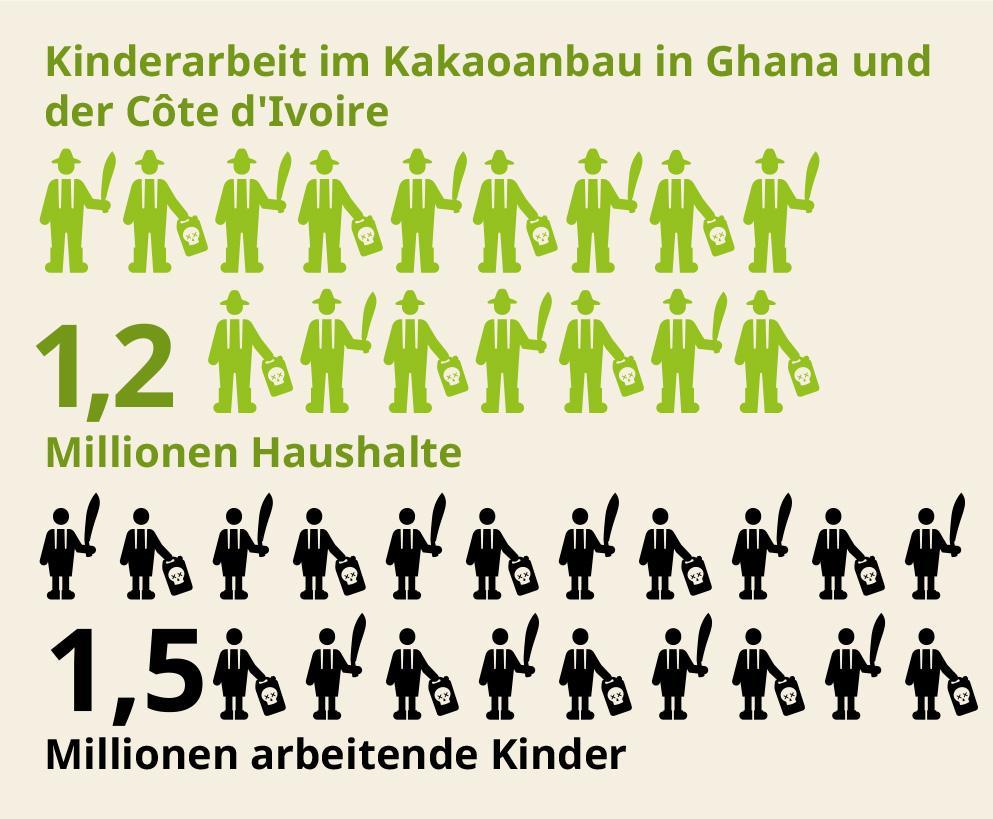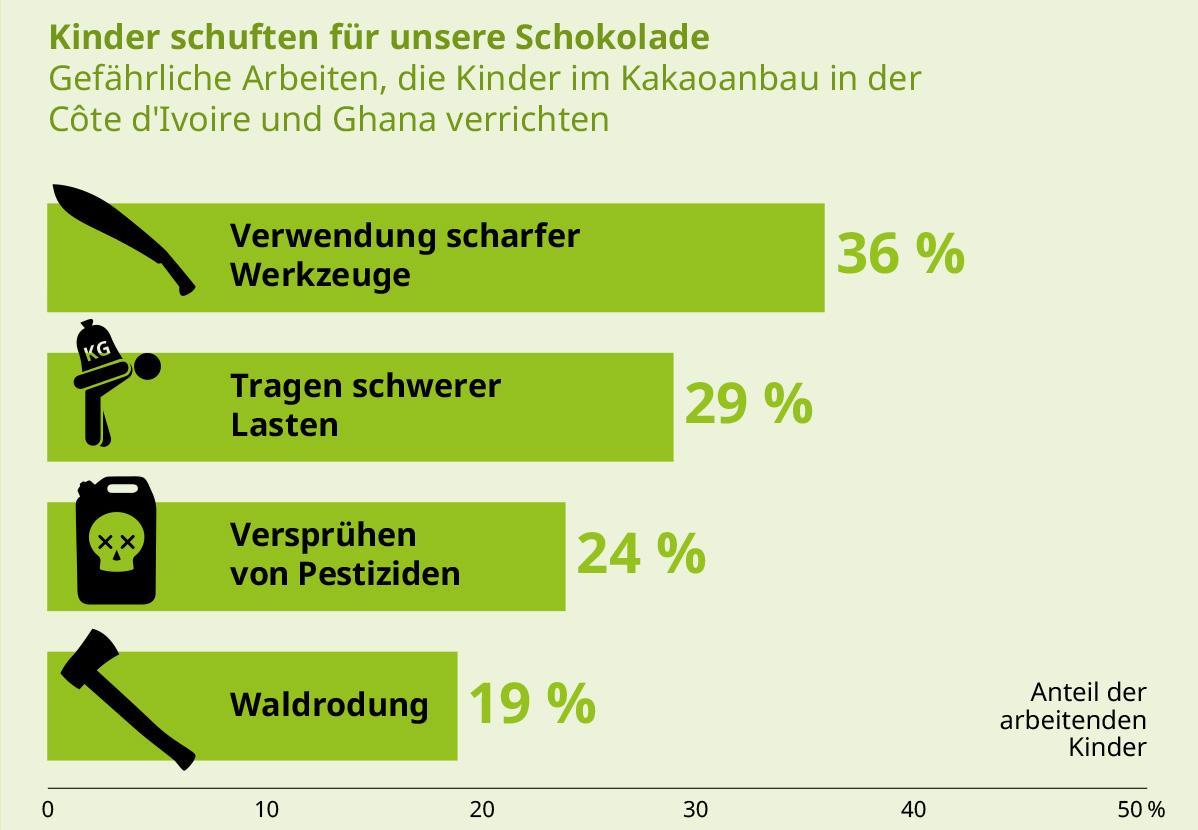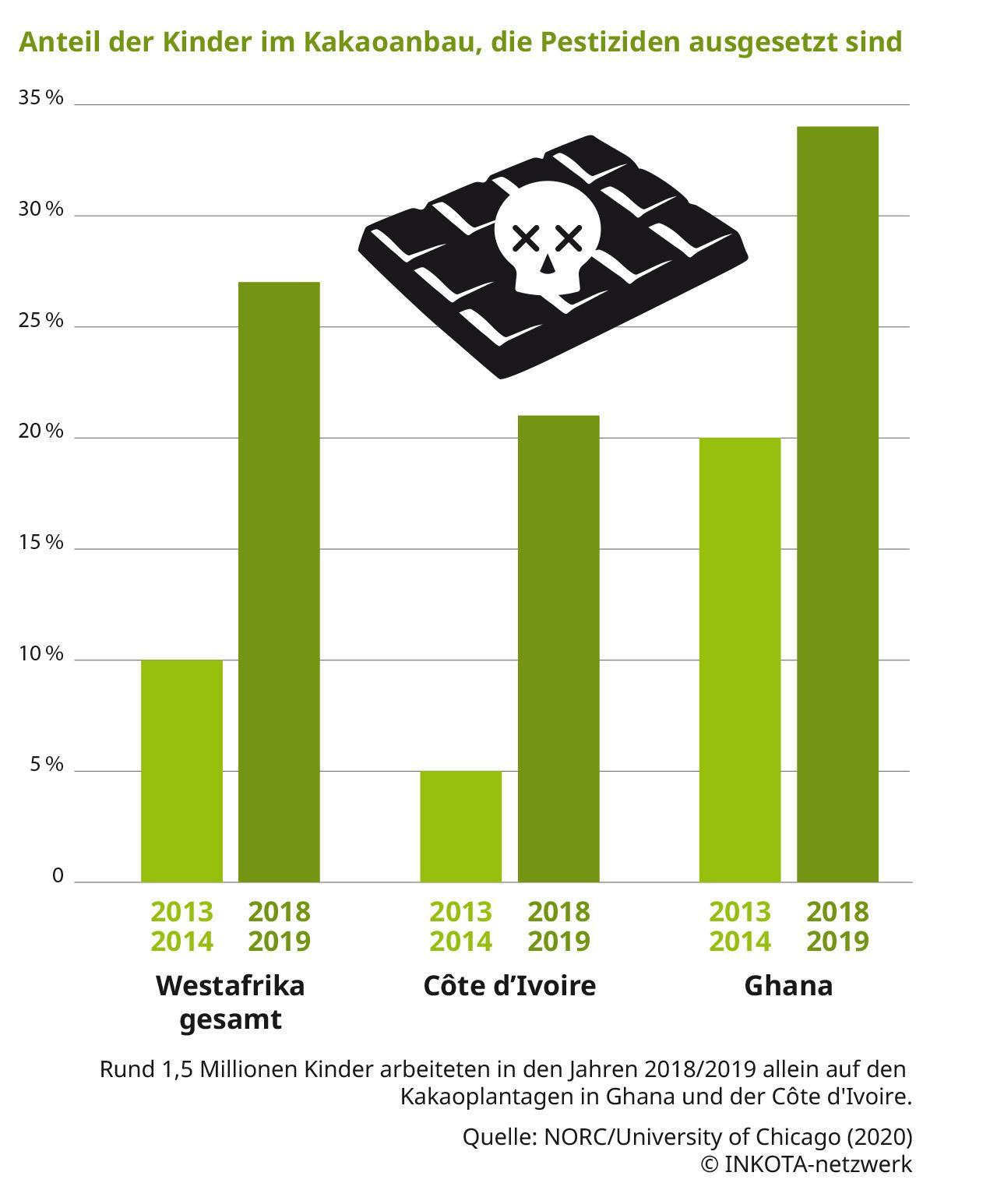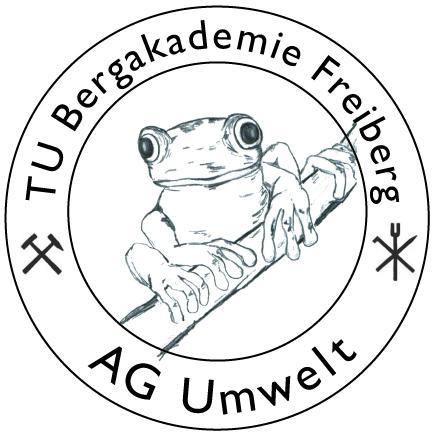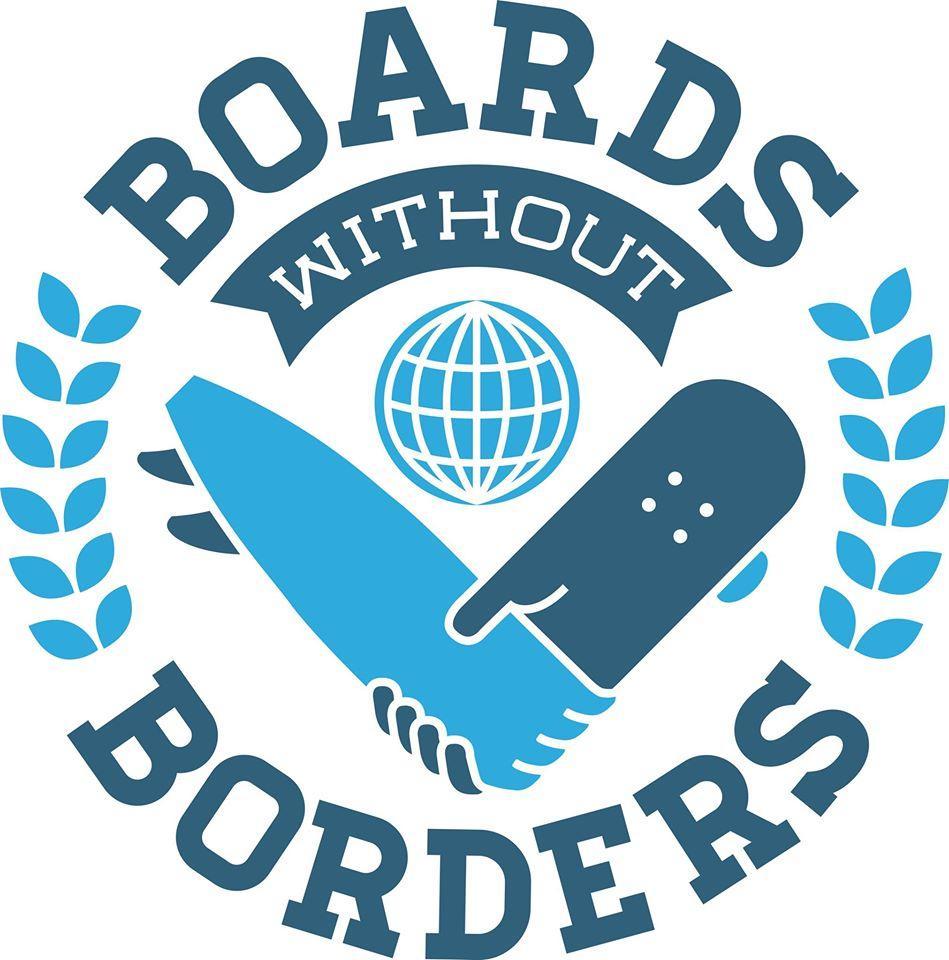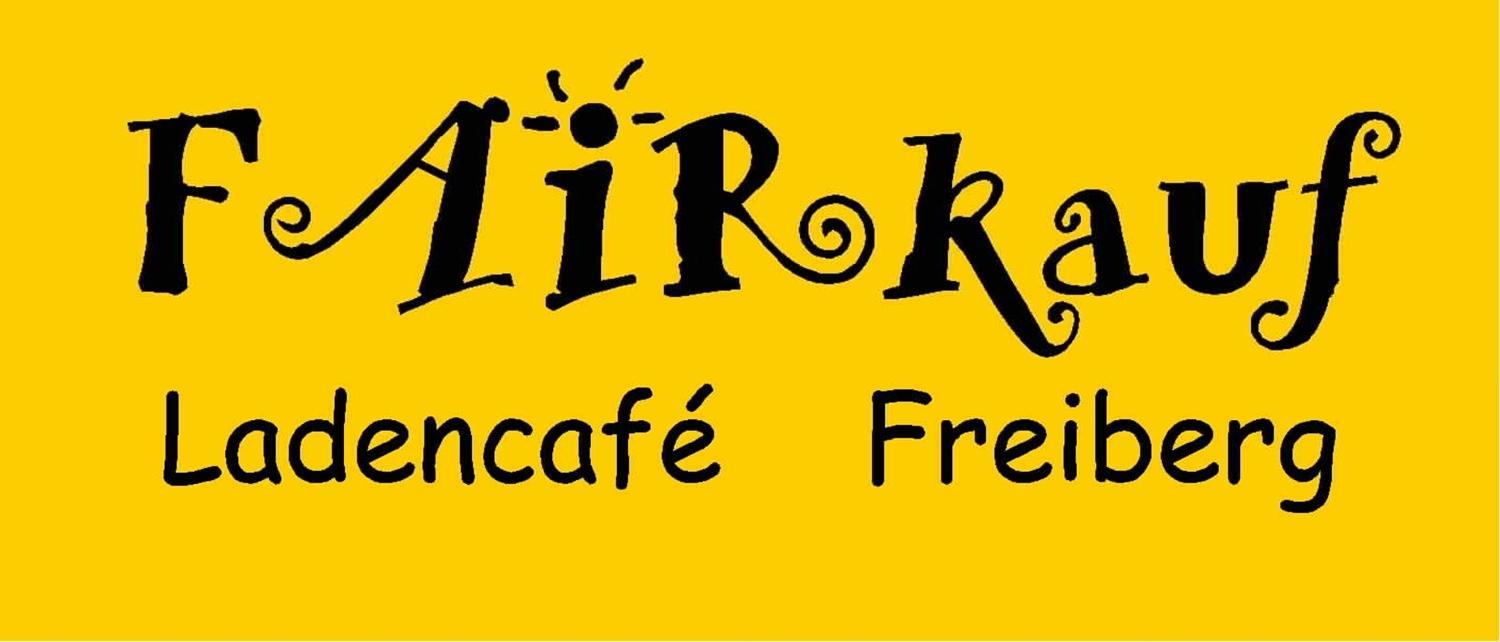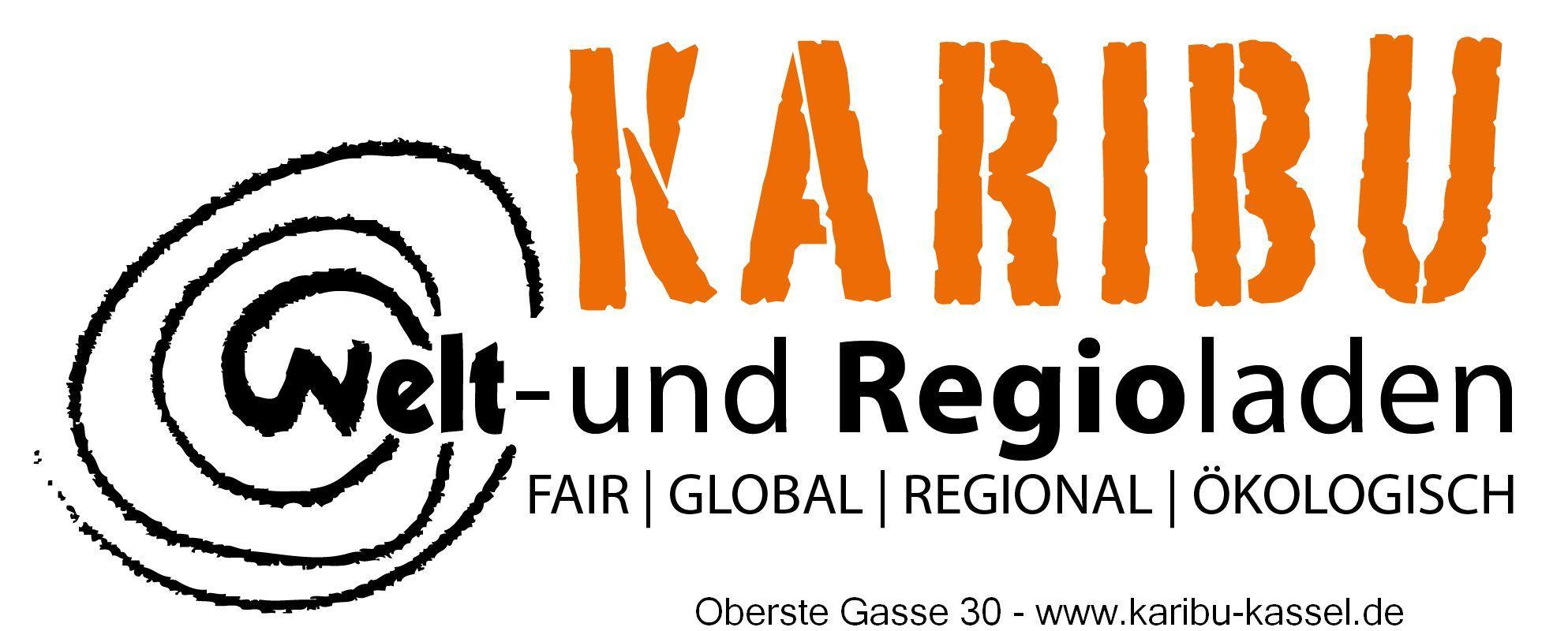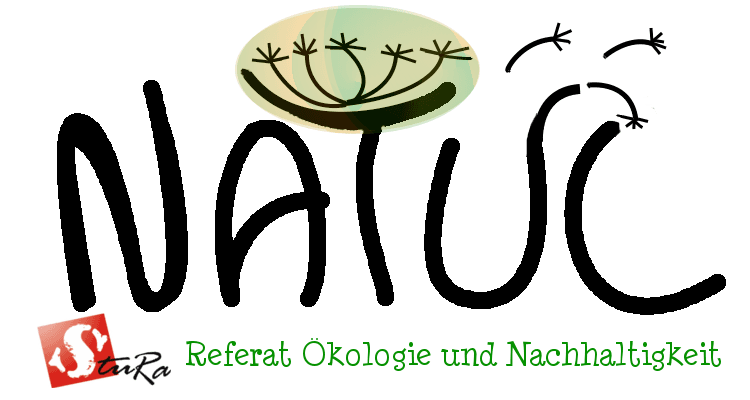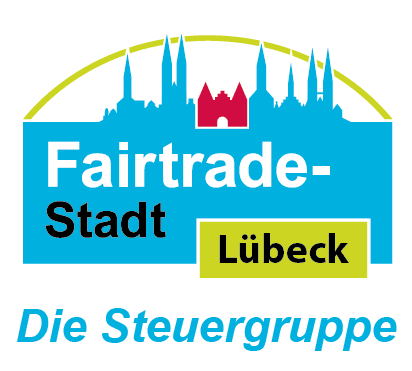Child labour in cocoa farming
The spraying of hazardous pesticides on cocoa plants, harvesting ofcocoa beans with sharp machetes and carrying them off the plantations in heavy sacks - around 1.5 million children still work under hazardous conditions on cocoa plantations in the two main growing countries of Côte d'Ivoire and Ghana alone. This is despite the fact that the chocolate industry had set itself the goal of reducing child labour in cocoa farming by 70 percent by 2020. An estimated 10,000 children are also victims of child trafficking and slavery. Many of these children are trafficked from neighbouring Mali and Burkina Faso to Côte d'Ivoire, where they are forced to work on cocoa plantations.
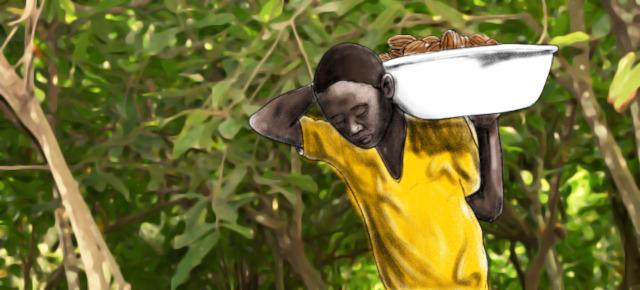
What does "child labour" mean?
Not all forms of work children perform are problematic. In Germany, too, it is common for children to work a few hours after school on their parents' farms.
However, in accordance with Conventions 138 and 182 of the International Labour Organization (ILO), all forms of forced labour and child slavery are prohibited, as are all forms of work that may have a harmful effect on the safety or physical and mental health of children.
Child labour - everyday life in cocoa farming
Poverty leads to child labor
Poverty and child labor are directly related:
The majority of cocoa farmers live well below the poverty line. The income of an average cocoa farmer's family in Côte d'Ivoire would have to roughly triple in order to provide a living wage. Since cocoa farmers cannot afford paid harvest workers, they are forced to rely on the free labour of their children. This is a vicious circle that chocolate companies could easily break: If they paid cocoa farmers a living wage, they could hire plantation workers and pay them for the harvest.
Besides poverty, there are other reasons for child labour. These include a lack of access to educational facilities in the cocoa-growing regions and a lack of awareness of the problem.
Broken promises of the industry
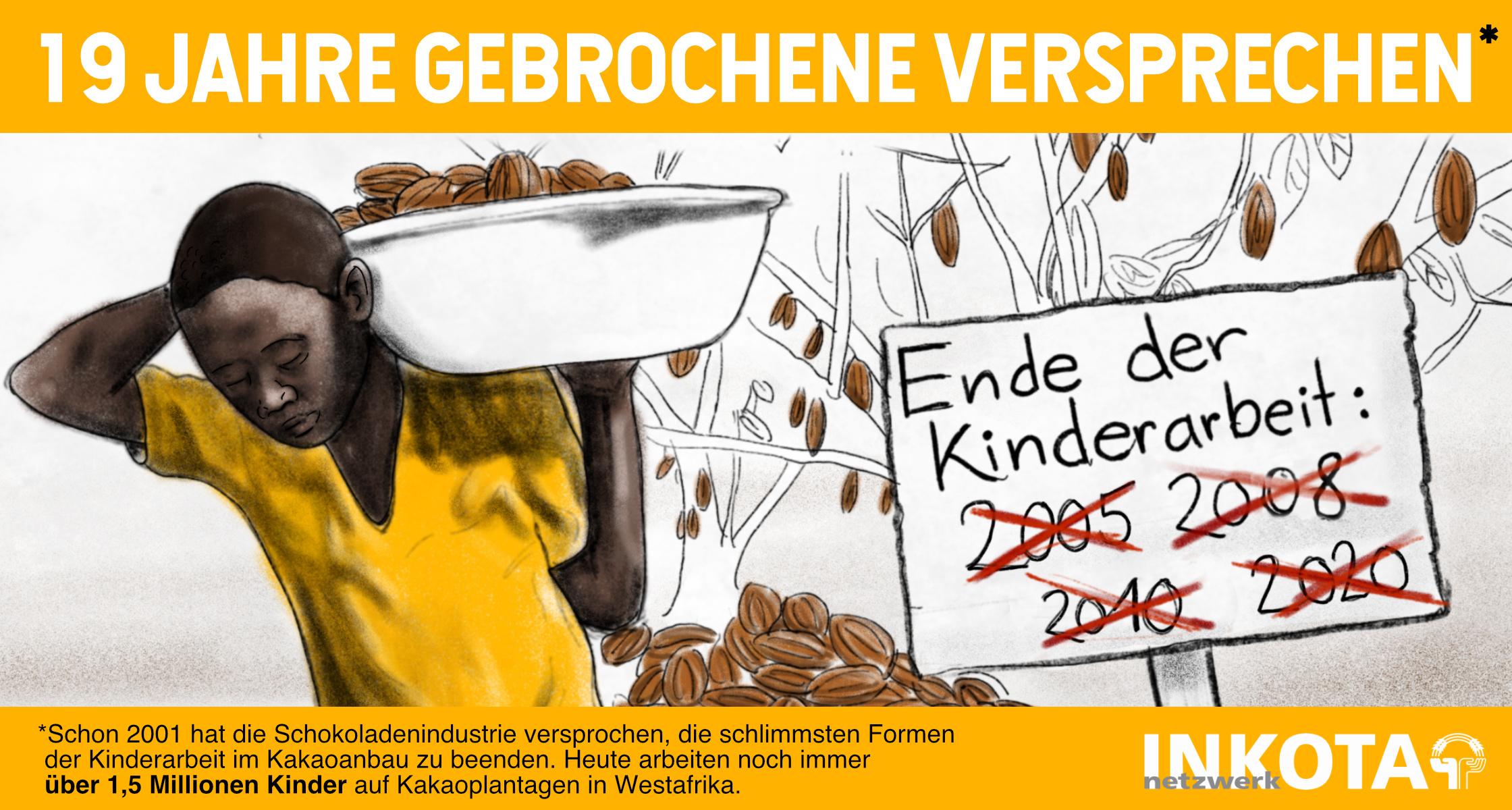
Back in 2001, representatives of the chocolate industry, including Nestlé, Mars and Ferrero, signed a voluntary agreement to eliminate child labour in cocoa farming - the so-called Harkin-Engel Protocol, named after two U.S. senators. In it, the companies promised to end the worst forms of child labour by 2005. This goal was not met and was amended several times in subsequent years. Most recently, the industry aimed to reduce the worst forms of child labour by 70 percent by 2020. However, chocolate companies failed to meet this goal, too: In October 2020, a study commissioned by the U.S. Department of Labor concluded that child labour has not decreased despite the efforts of governments and companies to date. On the contrary, the prevalence rate of child labour has actually increased over the past decade.
More information:
- Info sheet 5 - "Child labor - the bitter side of chocolate". (German, PDF)
- Info sheet 1: The bitter truth about chocolate. (German, PDF)
